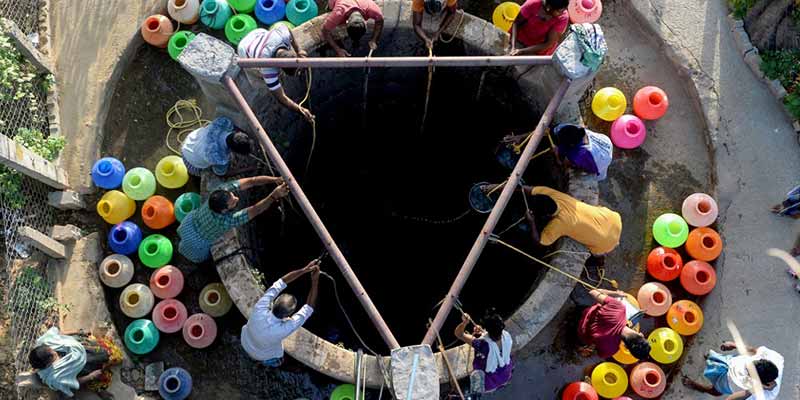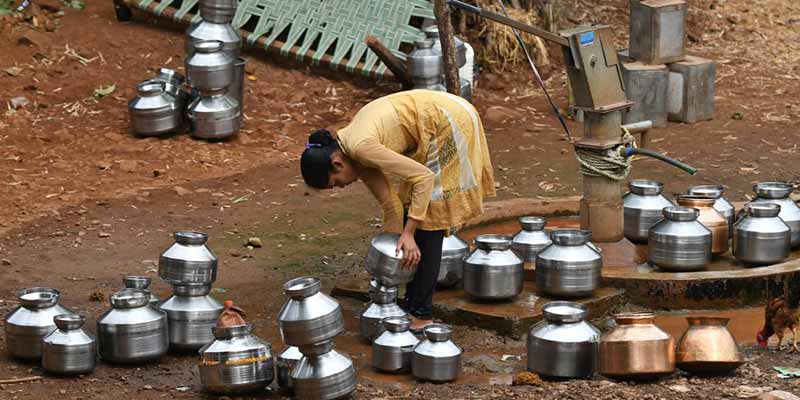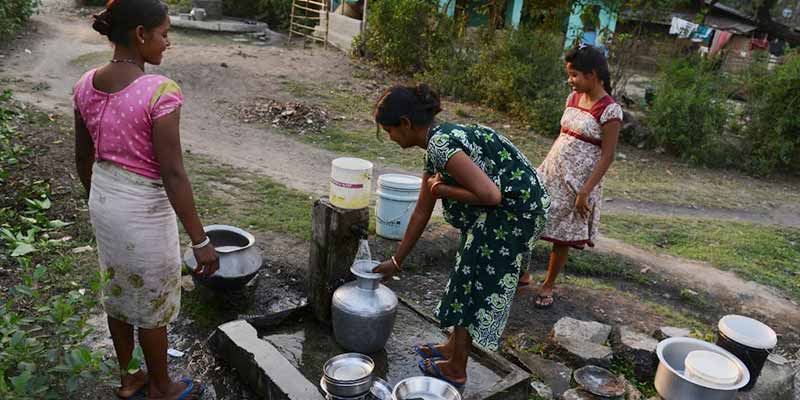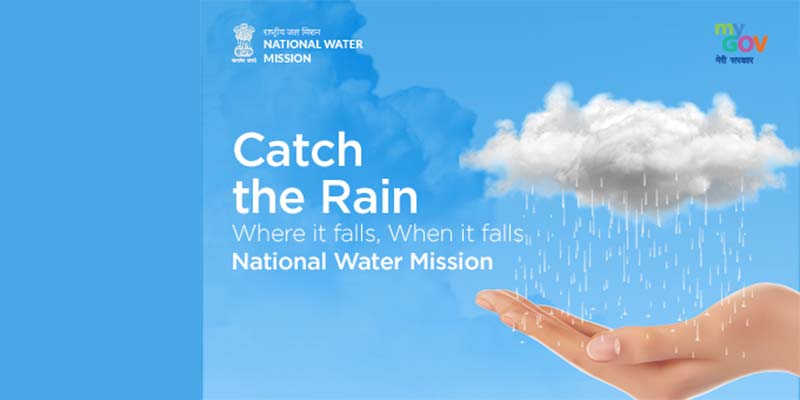- India
- Mar 29
Explainer / Initiatives for groundwater conservation
• Dynamic groundwater resources of the country are periodically assessed jointly by the Central Ground Water Board (CGWB) and state governments.
• Out of 6,965 assessment units — blocks, taluks, mandals, watersheds and firkas — in the country, 1,114 units in 15 states and union territories have been categorised as “over-exploited”, according to the 2020 assessment, Minister of State for Jal Shakti Bishweswar Tudu said in Rajya Sabha.
• In these 1,114 areas, the annual groundwater extraction is more than the annual extractable groundwater resource.
• The CGWB is periodically monitoring groundwater levels throughout the country on a regional scale, through a network for monitoring wells.
• In order to assess the long term fluctuation in groundwater levels, the water level data collected by CGWB during November 2021 have been compared with the decadal mean of November (2011-2020). Analysis of water level data indicates that about 70 per cent of the wells have registered rise in ground water levels whereas about 30 per cent of the wells have registered a decline in ground water levels.
Groundwater conservation
• India has about 18 per cent of the world’s population, but holds just 4 per cent of the freshwater resources.
• Increasing population, growing urbanisation and rapid industrialisation combined with the need for raising agricultural production generates competing demands for water.
• Contribution of groundwater is nearly 62 per cent in irrigation, 85 per cent in rural water supply and 50 per cent in urban water supply.
• Groundwater is an annually replenishable resource but its availability is non-uniform in space and time. It is the quantity of groundwater available in the zone of water level fluctuation, which is replenished annually with rainfall being the dominant contributor.
• Hence, the sustainable utilisation of groundwater resources demands a realistic quantitative assessment based on reasonably valid scientific principles.
• Water being a State Subject, initiatives on water management including conservation and artificial recharge to groundwater in the country is primarily states’ responsibility.
Central Ground Water Board (CGWB)
• Central Ground Water Board (CGWB) is the apex organisation of the ministry of jal shakti in dealing with groundwater and related issues.
• The CGWB has been entrusted with the responsibilities of developing and disseminating technologies, monitoring national policies for the scientific and sustainable development and management of India’s groundwater resources.
• The CGWB periodically takes up various studies, which include groundwater management studies, exploratory drilling programmes, monitoring groundwater level and water quality through a network of groundwater observation wells, etc and the result collected is shared with the concerned states for taking up suitable groundwater specific interventions.
• The CGWB, in consultation with states/UTs, has prepared ‘Master Plan for Artificial Recharge to Groundwater - 2020’. It is a macro level plan indicating various structures for the different terrain conditions of the country. It envisages construction of about 1.42 crore rain water harvesting and artificial recharge structures in the country to harness 185 Billion Cubic Metre (BCM).
Major initiatives to conserve, manage groundwater
Jal Shakti Abhiyan
The government launched Jal Shakti Abhiyan (JSA) in 2019 in 256 water stressed districts in the country in collaboration with states to improve water availability, including groundwater conditions in the country. In this regard, teams of officers from central government, along with technical officers from ministry of jal shakti, were deputed to visit water stressed districts and to work in close collaboration with district level officials to undertake suitable interventions.
The campaign “Jal Shakti Abhiyan: Catch the Rain” (JSA:CTR) was launched on March 22, 2021 with the theme “Catch the Rain - Where it Falls When it Falls” to cover all the blocks of all districts (rural as well as urban areas)
National Water Policy
National Water Policy (2012) has been formulated which advocates rainwater harvesting and conservation of water and highlights the need for augmenting the availability of water through direct use of rainfall. It also advocates conservation of river, river bodies and infrastructure should be undertaken in a scientifically planned manner through community participation.
Central Ground Water Authority
Central Ground Water Authority (CGWA) has been constituted under Section 3(3) of the ‘Environment (Protection) Act, 1986’ for the purpose of regulation and control of ground water development and management in the Country. CGWA grants ‘No Objection Certificates’ (NOC) for groundwater abstraction in 20 states/UTs through guidelines which are modified from time to time. The latest guidelines in this regard with pan-India applicability have been issued on September 24, 2020. Other states/UTs, regulate groundwater as per their extant guidelines/provisions.
Atal Bhujal Yojana
Atal Bhujal Yojana (Atal Jal), a Rs 6,000 crore Central Sector Scheme, is being implemented in certain water stressed areas of the country, which includes activities like preparation of water security plan at Gram Panchayat level in participatory mode by involving communities to use available groundwater and surface water in an efficient manner in all the sectors including agriculture.
It is for sustainable management of groundwater resources with community participation. It is being implemented in 80 water stressed districts and 8,565 Gram Panchayats of seven states — Gujarat, Haryana, Karnataka, Madhya Pradesh, Maharashtra, Rajasthan and Uttar Pradesh. The scheme includes innovative recharge structures including rain water harvesting structures.
‘More Crop Per Drop’
Department of Agriculture & Farmers Welfare (DA&FW) is implementing ‘More Crop Per Drop’ component of Pradhan Mantri Krishi Sinchayee Yojana (PMKSY), which is operational from 2015-16. It mainly focuses on water use efficiency at farm level through micro irrigation (drip and sprinkler irrigation system) to reduce the extraction of groundwater for agriculture.
NAQUIM
National Aquifer Mapping and Management programme (NAQUIM) is being implemented by CGWB as part of Ground Water Management and Regulation (GWM&R) scheme, a Central Sector scheme. NAQUIM envisages mapping of aquifers (water bearing formations), their characterisation and development of Aquifer Management Plans to facilitate sustainable management of groundwater resources in the country.
Other initiatives:
Model Building Bye Laws (MBBL) 2016 circulated by ministry of housing & urban affairs include provisions for rainwater harvesting. So far 33 states/UTs have adopted the provisions of rainwater harvesting of MBBL-2016.
The government generally supports artificial groundwater recharge/water harvesting works in the country through Mahatma Gandhi National Rural Employment Guarantee Scheme (MGNREGS) and Prime Minister Krishi Sinchayee Yojana - Watershed Development component (PMKSY-WDC), ‘Surface Minor Irrigation (SMI) and Repair, Renovation and Restoration (RRR) of Water Bodies schemes’ a component of PMKSY.
Manorama Yearbook app is now available on Google Play Store and iOS App Store




